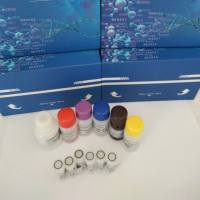Inhibition of α-Secretase by Zinc Metalloproteinase Inhibitors
互联网
373
The amyloid precursor protein (APP) is cleaved by at least three proteinases termed the α-, β-, and γ-secretases. Cleavage of APP at the N-terminus of the β-amyloid (Aβ) peptide by β-secretase and at the C-terminus by one or more γ-secretases constitutes the amyloidogenic pathway. In the nonamyloidogenic pathway, α-secretase cleaves APP within the Aβ peptide between Lys16 and Leu17 (numbering from the N-terminus of the Aβ peptide) (1 ), thereby preventing deposition of intact Aβ peptide. The α-secretase cleavage site lies some 12 amino acid residues on the extracellular side of the membrane, releasing the large ectodomain of APP (sAPPα), which has neuroprotective properties (2 ,3 ). The identification and characterization of the APP secretases is important for the development of therapeutic strategies to control the buildup of Aβ in the brain and the subsequent pathological effects of Alzheimer’s disease. Regulation of the balance of APP processing by the amyloidogenic and nonamyloidogenic pathways through either selective inhibition of β- and γ-secretases or activation of α-secretase can all be considered as potential therapeutic approaches. As a first step towards isolating the APP secretases, we have investigated the effect of protease inhibitors on the activities of α- and β-secretase. From these studies we have identified low molecular weight inhibitors of α-secretase.







